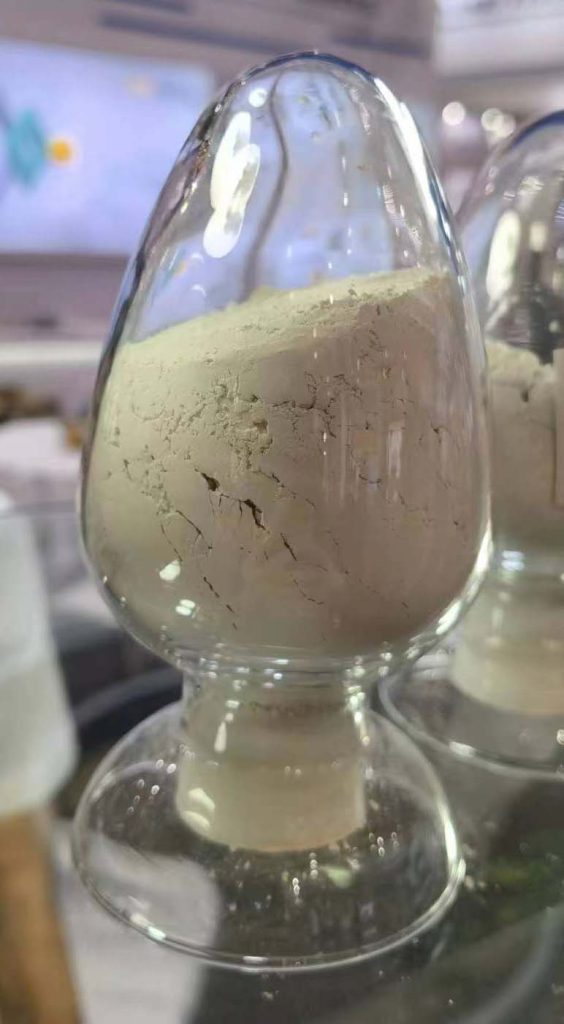Hidroksipropil Metilselüloz HPMC
Alçı Sıva için Hidroksipropil Metilselüloz HPMC
Hidroksipropil Metilselüloz HPMC Alçı sıva ve çeşitli inşaat malzemelerinin mekanik özelliklerinin arttırılmasında avantajlı bir katkı maddesi görevi görür.. Rolü bir arayüz aracısının rolüdür, Alçı sıvanın hem eğilme mukavemetini hem de yapıştırma etkinliğini artırmaya katkıda bulunan.
Hidroksipropil Metilselüloz HPMC, alçı son kat sıva formülasyonunda önemli bir bileşendir. Bu sıva çeşidi, gelişmiş duvar tesviyesi ve daha düzgün bir genel yüzey dokusu elde etmek için kullanılır.. HPMC'nin özelliklerinden yararlanarak, alçı bitirme sıvası, yüzey kalitesinin arttırılması açısından arzu edilen sonuçları verir.
Alçı Sıva Nedir?
Alçı Alçı. Bu mineral dönüşümü genellikle belirli katkı maddelerinin dahil edilmesi ile birleştirilir, hidroksipropil metilselüloz HPMC gibi, malzemenin özelliklerini etkilemede önemli bir rol oynayan.
Hidroksipropil metilselüloz HPMC, alçı alçının formülasyonunda önemli bir arttırıcı görevi görür.. Bu bileşik, doğal polimer malzemelerden türetilmiştir, İyonik olmayan bir selüloz türevi vermek için bir dizi kimyasal işleme adımına tabi tutulur. Bu türev kendini kokusuz ve toksik olmayan bir beyaz toz olarak gösterir, Birkaç avantajlı özelliğe sahip olmak.
Alçı alçısına dahil edildiğinde, Hidroksipropil metilselüloz HPMC bir arayüz ajanı olarak işlev görür, Malzemenin çekme mukavemetini ve bağlanma yeteneklerini etkili bir şekilde arttırır. Alçı sıva içinde gelişmiş bir bükülme mukavemeti sağlar, böylece genel mekanik bütünlüğünü arttırır. bunlara ek olarak, HPMC su tutulmasına önemli ölçüde katkıda bulunur, kalınlaşma, emülsifikasyon, film oluşumu, süspansiyon, adsorpsiyon, jelleşme, yüzey aktivitesi, ve koruyucu kolloidler olarak rolü.
Etkileri Hidroksipropil metilselüloz Alçı Ürünleri
Hidroksipropil Metilselüloz HPMC'nin alçı ürünlerine dahil edilmesi, bunların özelliklerini ve performansını önemli ölçüde etkileyen bir dizi dikkate değer etki sağlar.. Bunlar, üreticilerin Hidroksipropil Metilselüloz HPMC'yi alçı ürünlerine dahil ederek elde edebilecekleri avantajlardan birkaçıdır..
İşlenebilirlik
Hidroksipropil Metilselüloz HPMC'nin alçı ürünlerine entegrasyonu işlenebilirlik açısından dikkate değer gelişmeler sağlar. Selüloz eterin uygun özelliklerini akıllıca seçerek, HPMC içerir, Alçı işlenebilirliği önemli bir gelişme yaşar.
Hidroksipropil metilselüloz HPMC, alçı sıva alçalmasının arzu edilen bir tutarlılık sağlamada etkilidir.. Bu tutarlılık, uygulama kolaylığında çok önemli bir rol verir. HPMC'nin varlığı, sıva'nın en uygun dokuyu korumasını sağlar, Pürüzsüz uygulama ve manipülasyon için elverişli hale getirme. Bu, sıvayı belirlenen yüzeylere yayma ve yapıştırmanın daha verimli ve kesintisiz bir sürecine dönüşür.
Su tutma
HPMC'nin temel katkılarından biri, alçı karışımı içinde optimal su tutma sağlama kapasitesidir.. Bu özellik, hem çimento içeriğinin hem de karışım içindeki ek katkı maddelerinin kapsamlı bir hidrasyona uğramasını sağlamada çok önemli olduğunu kanıtlar..
Hidroksipropil metilselüloz HPMC'nin varlığı, hidrasyon işleminin en üst düzeye çıkarılmasını sağlar. Bu, alçı karışımının çalışma süresini uzatmada özellikle değerlidir. Kademeli ve sürekli hidrasyonu teşvik ederek, Hidroksipropil Metilkulüloz HPMC, karışımın uygulanabilir kaldığı süreyi etkili bir şekilde uzatır.
Su tutma işleminde hidroksipropil metilselüloz HPMC, alçıtuşlarda çatlama riskini de önemli ölçüde azaltır. Hidroksipropil metilselüloz HPMC tarafından desteklenen sürekli hidrasyon, erken kurutma ve ilişkili büzülme çatlaklarının oluşumunu en aza indirmeye yardımcı olur. Bu sonuç, sıvalı yüzeyin bütünlüğünü korumada özellikle önemlidir., Uzun vadeli dayanıklılığını ve görsel çekiciliğini sağlamak.
Ayar süresini ayarlayın
Çok yönlü bir katkı maddesi olarak, HPMC, bu yapı malzemelerine eklendiğinde priz geciktirici olarak işlev görebilir. Bu sertleşme geciktirici özelliği, aşırı derecede uzun kürleme sürelerine ihtiyaç duyulmadan belirli inşaat zaman dilimleri istendiğinde özellikle avantajlıdır.. Hidroksipropil Metilselüloz HPMC, çeşitli inşaat malzemelerinin sertleşme süresini etkileyebilir, çimento bazlı olanlar dahil, alçıtaşı, veya kireç.
Hidroksipropil Metilselüloz HPMC, alçı karışımının katılaşma sürecinin amaçlanan uygulamaya uygun şekilde modüle edilmesini sağlar. HPMC konsantrasyonunu değiştirerek, inşaatçılar ve imalatçılar priz süresini projenin operasyonel gerekliliklerine uyacak şekilde hassas bir şekilde ayarlayabilirler. Bu uyarlanabilirlik, alçı bazlı inşaat malzemelerinin pratikliğini ve çok yönlülüğünü artırır..
Hava Sürükleyici
Alçı formülasyonlara hidroksipropil metilselüloz HPMC'nin eklenmesi, ıslak harç içinde dakika hava kabarcıklarının oluşturulmasına neden olur. Bu hava sürüklenmesi, malzeme içinde petek benzeri bir yapıyı taklit eder. Bu mikro kabarcıklar etkili yağlayıcılar olarak işlev görür, Alçı'nın genel inşaat performansının arttırılması. Bu gelişmiş yağlama, daha yumuşak bir uygulama ve manipülasyonu kolaylaştırır, Daha verimli ve doğru sıva süreçlerine dönüşme.
Hidroksipropil metilselüloz HPMC, hava sürüklenmesine neden olabilir Hemen inşaat aşamasının ötesine uzanıyor. Bu etki, bazı sonuçsal faydalara katkıda bulunur. Böyle bir avantaj, ısı direncinin artmasıdır, İnşaat malzemelerinde bir önem faktörü. Alçı içinde hava ceplerinin varlığı, ısı transferinin hafifletilmesine yardımcı olur, böylece gelişmiş termal yalıtım özelliklerine katkıda bulunur.
Hidroksipropil metilselüloz HPMC tarafından kolaylaştırılan hava sürüklenmesi, ses yalıtımının arttırılmasında rol oynar. Alçı malzemesi içinde hava boşluklarının varlığı, ses emici özelliklerine katkıda bulunur, gürültü iletimini azaltmak ve ürünün akustik performansını arttırmak. Bu, özellikle gürültünün azaltılmasının bir öncelik olduğu ayarlarda alakalıdır., konut veya ticari alanlar gibi.
Hidroksipropil metilselüloz HPMC spesifikasyonları
Hidroksipropil metilselüloz HPMC tipik olarak beyaz veya kirli beyaz bir toz olarak karşılaşılır, görsel olarak nötr görünümüne katkıda bulunmak. Hidroksipropil metilselüloz HPMC'nin ışık geçirgenliği, daha düşük seviyelerde tutulur. 50%, Bir inşaat ve yapı malzemesi katkı maddesi olarak amaçlanan kullanımı ile uyumlu bir özellik.
Hidroksipropil metilselüloz HPMC'nin viskozitesi bir dizi 60000 ile 800000 mPa.s. Bu viskozite parametresi, malzemenin akış özelliklerini ve davranışını belirlemek için gereklidir., özellikle çeşitli formülasyonlara entegre edildiğinde. Viskozite üzerindeki kesin kontrol, hidroksipropil metilselüloz HPMC'nin belirli uygulama gereksinimlerine uyacak şekilde uyarlanmasını sağlar., Özellikle alçı tabanlı sıvada.
Hidroksipropil metilselüloz HPMC'nin pH değeri 5 ile 8.5. Bu pH spesifikasyonu, bileşiğin çeşitli malzeme ve ortamlarla uyumluluğunu yansıtır., PH dengelerini olumsuz etkilemeden çok çeşitli formülasyonlara entegrasyon için uyarlanabilir hale getirilebilir.
Parçacık boyutu açısından, Hidroksipropil metilselüloz HPMC, 5%. Bu parametre, bileşiğin parçacık dağılımının göstergesidir ve ince bir toz tutarlılığa sahip olmasını sağlar. Hidroksipropil metilselüloz HPMC'nin su içeriği aşağıda tutulur 5%, stabilitesini ve nem emilimine karşı direncini yansıtan.
Alçı bazlı sıvada hidroksipropil metilselüloz HPMC'nin kullanımı
Hidroksipropil metilselüloz HPMC çok fazla alçı bazlı sıva geliştirir, sıva sürecinin farklı aşamalarında performansın ve sonuçların artırılmasına katkıda bulunmak. Bunlar, hidroksipropil metilselüloz HPMC'yi kullanan aşağıdaki alçı ürünleridir.:
Bağ
Hidroksipropil metilselüloz HPMC, alçı bağlama söz konusu olduğunda önemli bir bileşendir, özellikle döşeme gibi pürüzsüz veya düşük emme geçmişlerini içeren senaryolarda, beton, sıva tahtası, veya önceden tedavi edilen yüzeyler.
Bu tür substratlara alçıtaşı uygularken, Hidroksipropil metilselüloz HPMC, yapışma işleminin optimize edilmesinde kritik bir rol oynar. Bu yüzeyler, pürüzsüzlükleri veya düşük emme seviyeleri ile karakterize edilir, Güvenli ve dayanıklı bağ elde etmek açısından bir meydan okuma oluşturmak.
Hidroksimetil Selüloz HPMC, alçı malzemesi ve substrat yüzeyi arasında bir köprü oluşturarak artmış yapışmayı teşvik eden bir bağlama maddesi görevi görür.. Bileşiğin yapışkan doğası, güçlü ve güvenilir bir bağlantıyı kolaylaştırır, Yüzeyin azaltılmış emme veya pürüzsüz dokusunun ortaya koyduğu sınırlamaların üstesinden gelmek.
Kalabalık | Hidroksipropil metilselüloz
Kalkış Alçalmağı, yüksek kaliteli malzemelerden oluşan ve dikişlerin işlenmesinde formüle edilmiş özel bir alçıdır., İç ve dış köşeleri düzeltme, ve alçıtaşı içindeki küçük hasarların onarılması. Ortak bantla birlikte, Hidroksipropil metilselüloz HPMC açısından zengin kalafatçı alçı, dikiş tedavisi için güvenilir ve etkili bir çözüm sunar.
Hidroksipropil metilselüloz HPMC'nin doğal özellikleri, alçı uygulamalarında kalafat alçı etkinliğine katkıda bulunur. Kazanma sıva formülüne tanıtıldığında, HPMC, karışımın genel uyumunu ve yapışmasını arttırır. Bu özellik, dikişleri ele alırken özellikle önemli hale gelir, köşeler, ve alçı tahtalarındaki küçük hasarlar, Güvenli ve kalıcı bir bağın çok önemli olduğu yerlerde.
Hidroksipropil metilselüloz HPMC'nin dahil edilmesi, kalafat sıvasının alçı alt tabakası ile kesintisiz entegrasyonunu teşvik eder.. Yapışkan özellikleri, sıvanın eşit ve güvenli bir şekilde yapışmasını sağlar, Boşlukları etkili bir şekilde sızdırmaz, köşeleri düzeltme, ve küçük kusurları tamir etmek. Bileşik bir bağlayıcı maddesi görevi görür, Sadece alçı kartlarının görsel görünümünü geliştiren değil, aynı zamanda yapısal bütünlüklerini de güçlendiren tutarlı bir arayüz oluşturma.
Alçı bazlı kaplama malzemeleri | Hidroksipropil metilselüloz
Alçı tabanlı ve alçı kirli alçı sistemleri, sürekli uygulama süreçleri ile karakterizedir, sıva makineleri tarafından kolaylaştırıldı. Bu malzemeler, duvar ve tavanların yüksek verimli ve sorunsuz kapsamı ile ünlüdür, tek bir katmanın uygulanmasıyla elde edildi.
Hidroksipropil metilselüloz HPMC, sıva karışımının işlenebilirliğini arttırır, sıva makinelerinden pürüzsüz ve tutarlı akış sağlamak. Bu gelişmiş işlenebilirlik, sürekli bir başvuru sürecini sürdürmek için çok önemlidir., alçı yüzeylere eşit ve verimli bir şekilde püskürtülmesini sağlamak.
Hidroksipropil metilselüloz HPMC, kaplama malzemesinin çeşitli substratlara yapışmasını arttırır, güvenilir ve kalıcı bir bağ ile sonuçlanır. Bu özellik, püskürtülen sıva'nın duvarlara ve tavanlara etkili bir şekilde yapışmasını sağlamada çok önemlidir., Malzemenin uzun ömürlülüğüne katkıda bulunan üniforma ve güvenli bir kaplama sağlamak.


